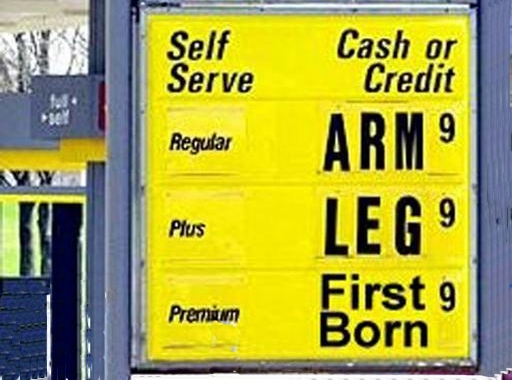Gas Is Gas. Why Do Prices Differ?

If you drive the length of Montauk Highway from Amityville to Montauk Point and watch the passing gas signs that line the road, you will notice how much gas prices vary. As low as $3.95 a gallon of regular in Amityville to $3.91 in East Islip back to $3.99 in Eastport most prices remain in a ballpark relationship; however, when you cruise down the highway into Westhampton Beach the price skyrockets to $4.35 and soars even higher to $4.49 in Amagansett—this is still the same county.
Last month, gas prices climbed to a startling $4.69 a gallon on the South Fork. In a report released by the OPIS, Oil Price Information Service, nine South Fork communities ranked within the top 100 highest gas prices among the 870 communities included in the survey. Amagansett was the highest South Fork town on that list at number four with a price of $4.46 a gallon. Westhampton Beach was number 12 on the same list at $4.36.
Gas prices, though they remain high for drivers, have been giving drivers’ reflief over the last 10 days as the national average has dropped down to $3.82, according to American Auto Association’s Daily Fuel Gauge Report. However, this national average doesn’t seem to transcend to the South Fork.
“Prices had increased dramatically between February and April, by up to 40 cents,” Fred W. Thiele Jr. New York State Assemblyman stated in a press release. “Prices stabilized in the month of April. However, prices on the South Fork did not decline as they did in other parts of Long Island and New York State.”
However, Thiele notes that South Fork gas prices are roughly 5 cents higher than the Long Island average. The Long Island average is 5 cents higher than the New York State average.
But gas prices last weekend dipped to as low as $3.89 in Calverton, Riverhead. So how can gas be nearly 50 cents more a gallon in Calverton than Westhampton Beach?
Robert Sinclair Jr., the manager of media relations for AAA New York suggests that the costs of transporting gasoline to Long Island, especially to the towns on the East End could explain why prices here are so high.
Gas prices in the Northeast region of the country are nearly 53 cents higher than the Midwest region. Sinclair also indicated that recent closures of nearby oil refineries are another potential explanation as to why gas prices are higher in the Northeast.
Sinclair also reminds that there are temporary refinery shutdowns that annually happen in March or early spring as refineries “retool” to produce summer blends of gasoline that tends to create “mini gas shortages,” he notes in a statement.
In addition to transporting gasoline to the East End and the closing of oil refineries, the most straightforward reason why gasoline is so expensive in New York is because of taxes. No surprise there as New York State is notorious for its taxes. Sinclair confirms that New York has the highest state gasoline tax in the country, where New Yorkers typically pay about 64 cents per gallon in just tax alone.
If anyone has ever traveled on I-95 or anywhere out of New York State, drivers make it a habit to fill up in New Jersey, either before entering or after leaving New York State.
Another reason why New York State gas is so costly is because of the Merchant Marine Act of 1920. Better known as the Jones Act, this is a federal statute that regulates maritime commerce in U.S. waters and between U.S. ports. The act requires that all goods transported by water between U.S. ports be carried in U.S.-flag ships, constructed in the United States, owned by U.S. citizens, and crewed by U.S. citizens and U.S. permanent residents with the purpose of supporting U.S. maritime industry. The law makes it costly for coastal states to receive shipments from other US states. This also makes it cheaper to buy foreign oil.
The high gas prices are a problem because people need to drive on Long Island, especially on the East End, as mass transportation is not as available as it is in the city or even in western Suffolk.
For environmentalists this is just another proof that America depends too heavily on gasoline. But whether one is an environmentalist or just gas price conscience, many agree it’s time to make greater commitments to fuel efficiency habits.



